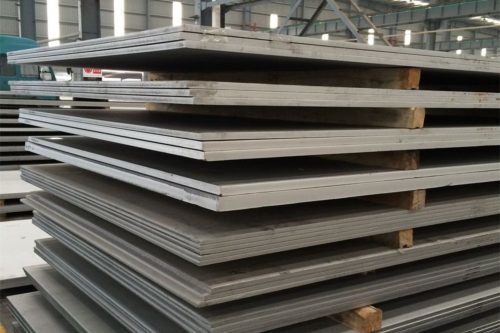1. Ferritic stainless steel
Ferritic stainless steels include grade 430 and contain only chromium as the main alloying element. Chromium is present in an amount between 10.5-18%. They are known for their moderate corrosion resistance and poor manufacturing properties. Manufacturing properties can be improved by alloy modification and are satisfactory in grades such as 434 and 444. Ferritic stainless steels cannot be hardened by heat treatment and are always used in the annealed condition.
Ferritic stainless steel is magnetic. They are also less susceptible to stress corrosion cracking. The weldability of thin-walled sections is acceptable, but decreases with increasing section thickness.
Ferritic stainless steels are commonly used in: vehicle exhaust, fuel lines, cookware, architectural trim, home appliances.
2. Martensitic stainless steel
Compared to ferritic stainless steels, high carbon and low chromium content are distinguishing features of martensitic stainless steels. Martensitic stainless steels include 410 and 416. Hardened martensite cannot be successfully cooled to form. They are magnetic, have moderate corrosion resistance and poor solderability.
Martensitic stainless steels are commonly used in: blades, cutlery, surgical instruments, fasteners, shafts, etc.

3. Duplex stainless steel
Duplex stainless steels have high chromium and low nickel content. This makes the duplex stainless steel microstructure including austenite phase and ferrite phase. They include alloys such as 2304 and 2205. These alloys are named because of their respective compositions - 23% chromium, 4% nickel and 22% chromium, 5% nickel.
By having both austenite and ferrite in a microstructure, duplex stainless steels have two classes of properties. Although a compromise between the two "pure" types, duplex stainless steels can offer some unique property solutions. Duplex grades are resistant to stress corrosion cracking, but not like ferritic grades. The toughness of duplex stainless steels is better than that of ferritic stainless steels, but lower than that of austenitic stainless steels.
Most importantly, the corrosion resistance of duplex stainless steels is comparable to, or better than, 304 and 316 stainless steels. This is especially true of chloride attacks. Duplex stainless steels are easy to weld. They also have high tensile strength.
Duplex stainless steels are commonly used in heat exchangers, marine applications, desalination plants, food pickling plants, offshore oil and gas installations, chemical and petrochemical plants.
4. Precipitation hardened stainless steel
Precipitation hardening grades contain chromium and nickel. They develop very high tensile strength by heat treatment. Precipitation hardening grades are usually supplied in a "solution treated" condition that allows steel to be machined. After machining or forming, the steel can be aged in a low temperature heat treatment process. Since the heat treatment is performed at a low temperature, no deformation is caused in the workpiece. 630 is the most common precipitation hardening grade. This grade is also known as 17-4 PH due to the composition of 17% chromium, 4% nickel, 4% copper and 0.3% niobium.
Precipitation hardened stainless steels are commonly used in: pulp and paper industry equipment, aerospace applications, turbine blades, nuclear waste barrels, mechanical components.